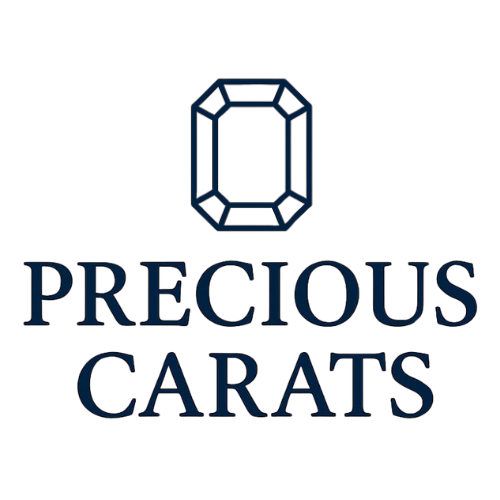How one gemstone buyer uncovered hidden treatment — and found quiet clarity.
By Precious Carats
The Starting Point: A Certified, Natural, “Untreated” Yellow Sapphire
Ananya (name changed) bought a certified yellow sapphire online for ₹19,800. The gemstone was marketed as:
– Natural Yellow Sapphire
– Certified by an in-house gem lab
– Untreated and Jyotish-grade
– Ideal for astrological or spiritual use
It came with a printed certificate, a neat box, and a confident claim: “100% original.”
But within a few weeks, the gem felt… wrong. Dull in sunlight. Flat in indoor light. No inner reflection. No natural glow.
She reached out to Precious Carats not with a complaint — just a quiet question:
“Is this how it’s supposed to look?”
Our Diagnosis: The Problem Behind the Paper
She sent:
– A close-up photo of the stone in daylight
– A scan of the original certificate
– A short video clip for visual analysis
Our gem experts immediately noted:
1. The certificate came from an in-house laboratory — not an accredited independent gem lab like IGI or IIGJ.
2. The report said “Natural Yellow Sapphire”, but there was no origin mentioned, and no treatment disclosure.
3. The gem’s tone, structure, and surface glow pointed to a Nigerian-origin sapphire, likely heat-treated in a Bangkok cutting facility — a common practice in the mass gemstone market.
This is where most buyers are misled — not by what’s printed, but by what’s omitted.
We Upgraded Her Report to IIGJ
To give her clarity, we offered to upgrade the lab report to a trusted, government-backed institute — IIGJ (Indian Institute of Gems & Jewellery).
The upgraded IIGJ report revealed:
– Gem Type: Natural Yellow Sapphire
– Treatment: Heated
– Likely Origin: Nigeria
– Commercial-grade clarity and structure
So technically, her seller didn’t lie. But they also didn’t tell the whole truth.
What Precious Carats Did Next
We didn’t criticize the seller. We didn’t offer a replacement pitch.
We simply explained:
– What real gemstone certification should include
– Why treatment disclosure and origin impact both energy and value
– The difference between glow vs. surface colour
We shared visual comparisons of Sri Lankan sapphires, all with independent lab reports, full video proof, and no vague promises.
A week later, Ananya returned — not because we pushed her, but because she now understood what she wanted.
She selected a 3.45 carat, untreated Ceylon yellow sapphire, IIGJ-certified, glow-verified, and quietly beautiful.
Why This Matters
This story isn’t about just one gemstone.
It’s about a buyer who paused, questioned, and learned.
It’s about a market where certified doesn’t always mean clear.
And it’s about choosing a slower, safer path — not because it’s loud, but because it’s right.
At Precious Carats, We Don’t Sell Trust — We Build It.
There are many reputable gemstone sellers in India — and many who aren’t.
We don’t claim to be the only ethical source.
We simply promise to be a clean, patient, and verified one.
If you\’re holding a gem that feels uncertain — even if you didn’t buy from us — we’ll help you understand it.
Treatment or not. Origin or not. Certificate or not.
We’ll show you what’s there — and what’s missing.
Have a certificate you’re unsure about?
Share it on WhatsApp — we’ll help you decode it, line by line.
[WhatsApp Our Gem Helpdesk]
[Explore Verified Yellow Sapphires]

